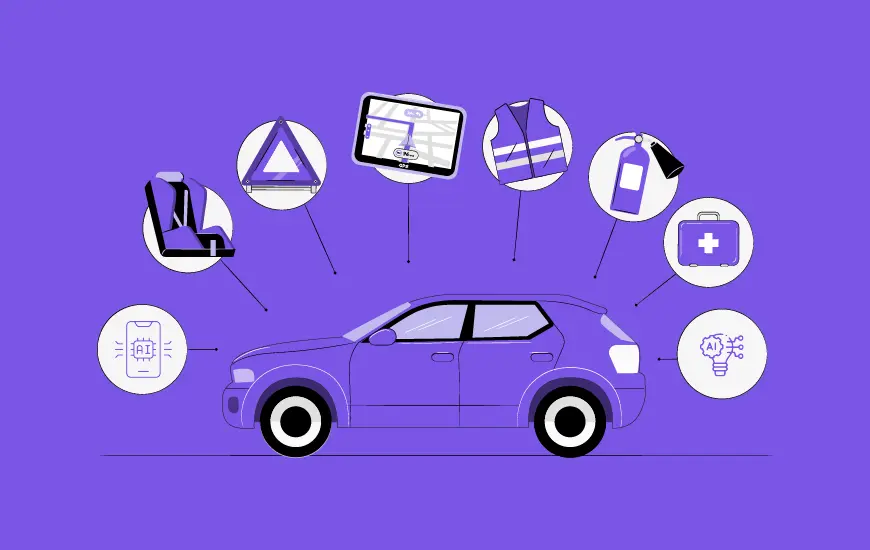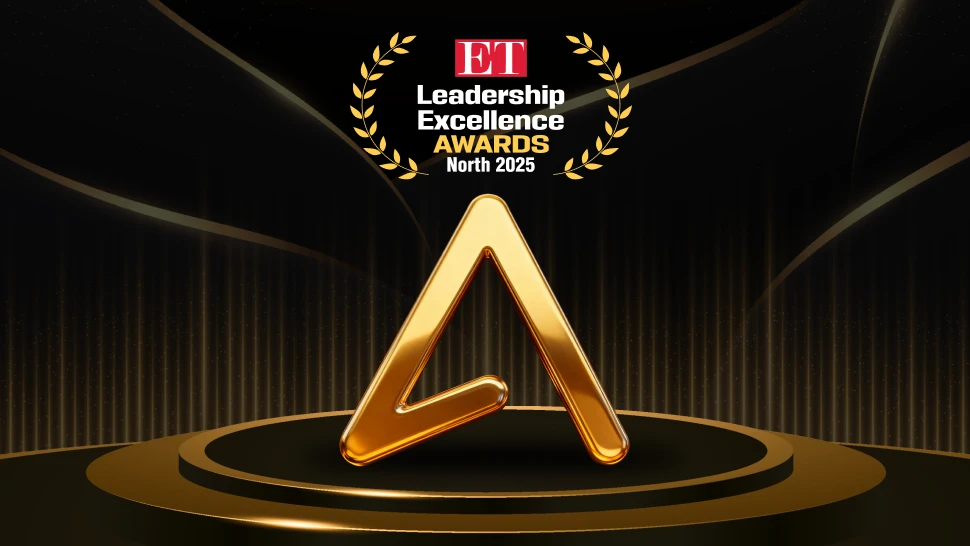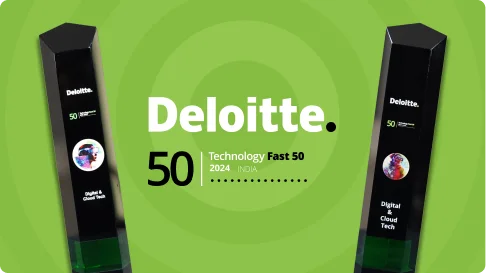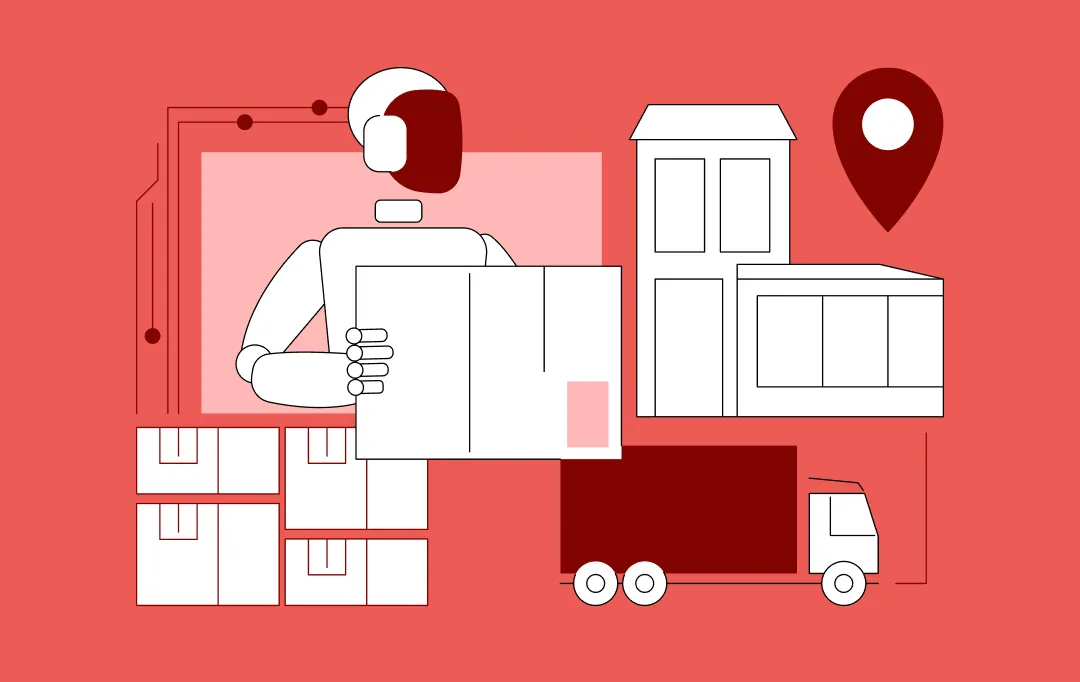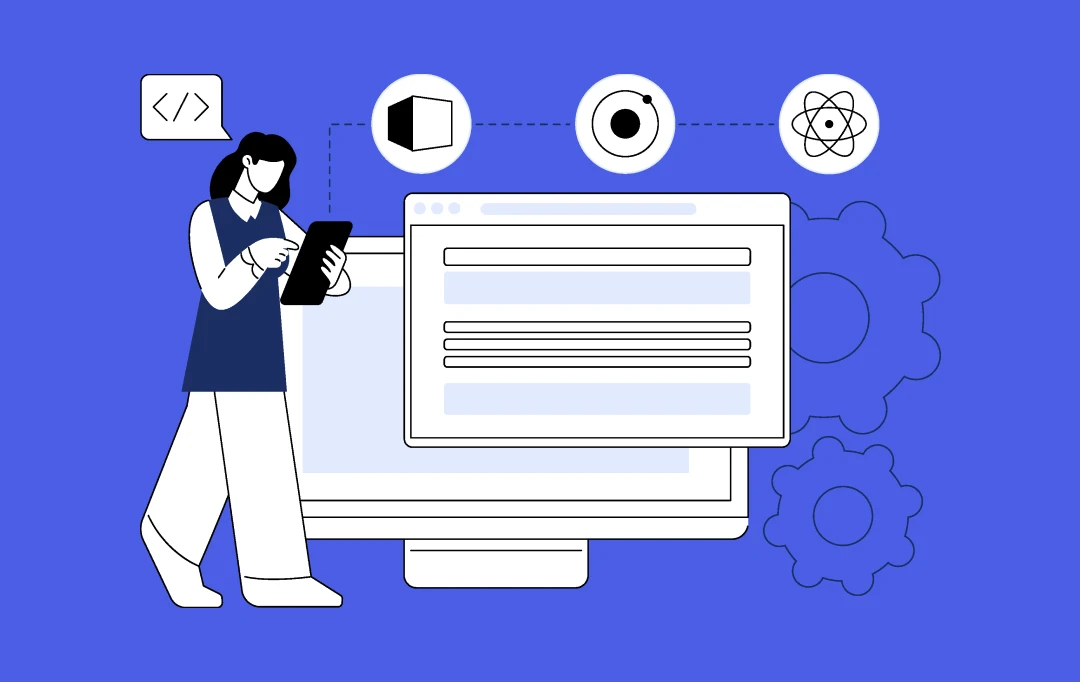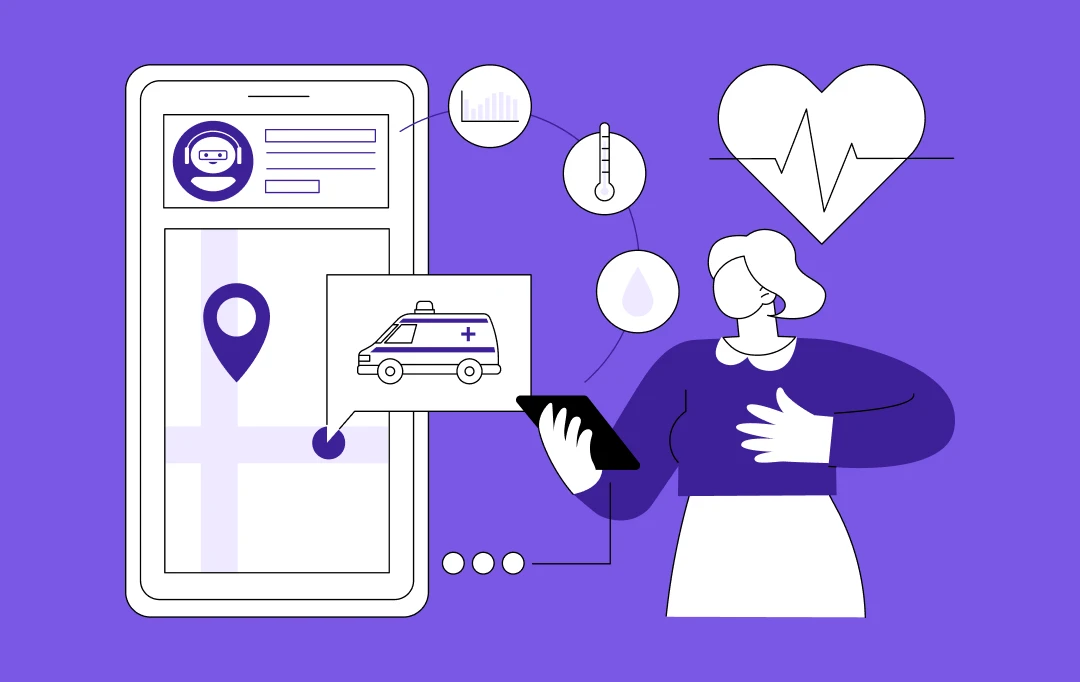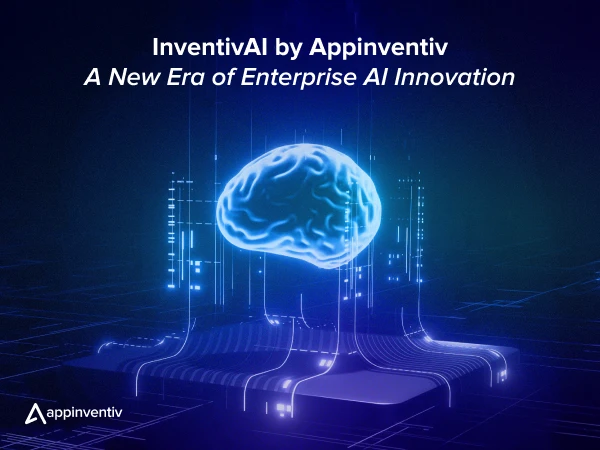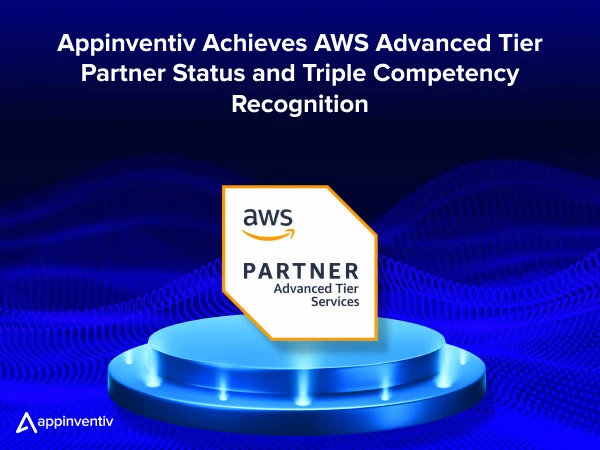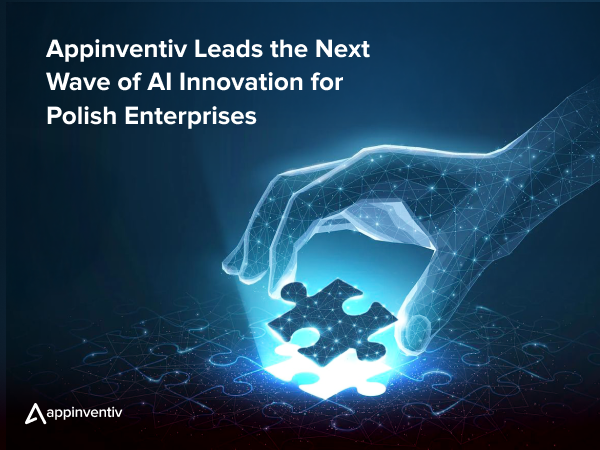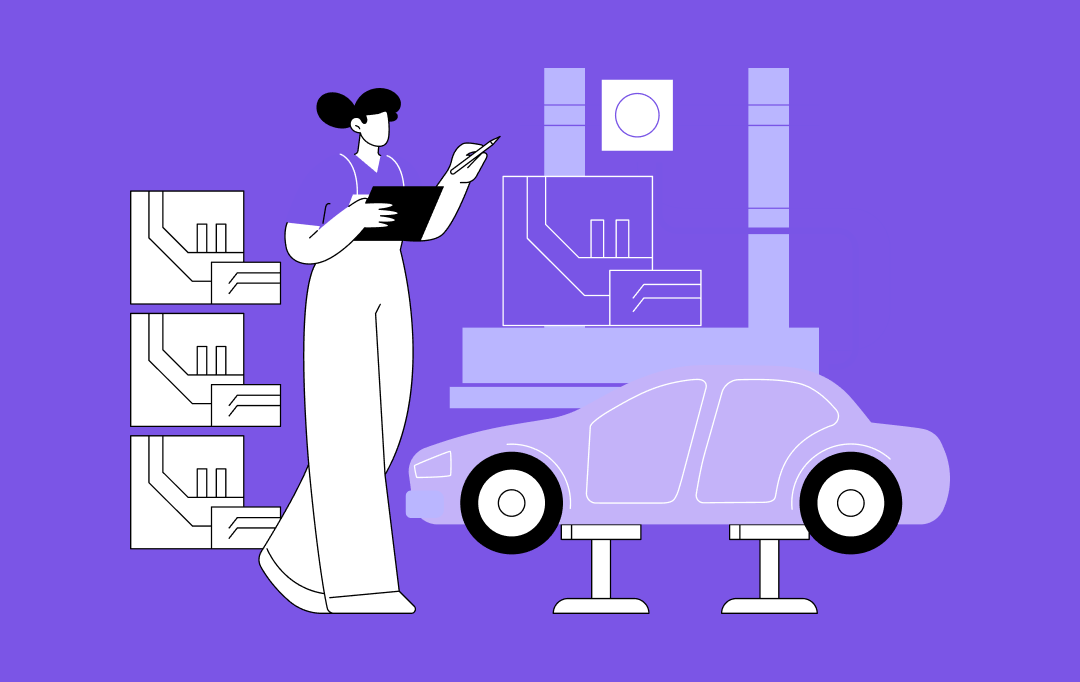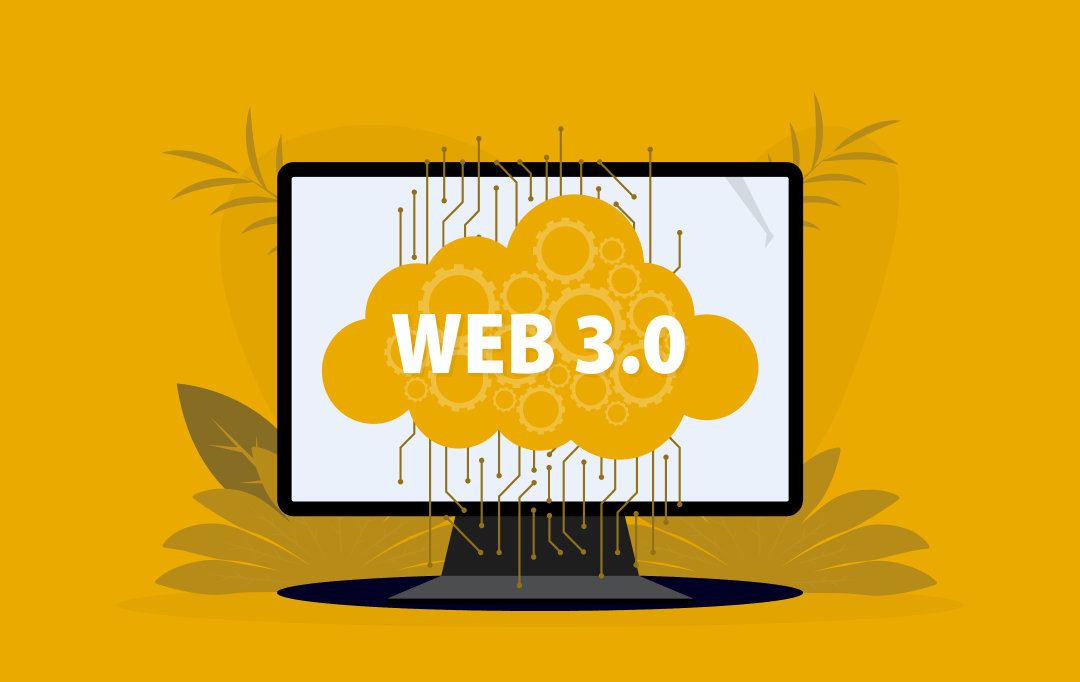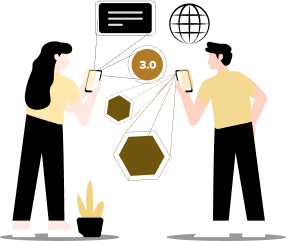- The Web Evolution Journey: From 1.0 to 3.0
- Web 1.0: The Static Beginning
- Web 2.0: The Interactive Revolution
- Web 3.0: The Ownership Era
- What Powers the Strength of Web 3.0 Blockchain for Businesses?
- Artificial Intelligence (AI)
- Internet of Things (IoT)
- Augmented Reality (AR) & Virtual Reality (VR)
- Importance of Web 3.0 Blockchain in Business
- Privacy-First Design
- Unbreakable Security
- True Data Ownership
- Universal Interoperability
- Permission-Free Innovation
- How Will Web 3.0 Impact Business: Key Features and Components
- Decentralization: Shifting the Power Axis
- Ownership and Incentives: Empowering the Individual
- Interoperability: Breaking Down Digital Silos
- Permissionless Participation: An Open Invitation
- AI and Semantic Web: The Intelligent Companion
- 3D Graphics, AR/VR: Immersive Realities
- Ubiquity: The Ever-Present Internet
- The Web 3.0 Blockchain Stack
- New Business Models Enabled by Web 3.0
- Decentralized Autonomous Organizations (DAOs)
- Token-Based Loyalty Programs
- Revenue Sharing and Decentralized Governance
- Continuous Funding and Token Offerings
- Perpetual Royalties via NFTs
- Transforming Industries: Where Web 3.0 & Blockchain Make Their Mark
- Financial Services (BFSI)
- Social Media
- Data Storage
- Gaming
- Entertainment and Streaming
- Supply Chain Management
- Healthcare
- Retail & E-commerce
- Real-Life Examples of Web 2.0 vs Web 3.0 Dapps: How the Digital Landscape is Evolving
- Getting Your Business Ready for Web 3.0
- 1. Educate and Train
- 2. Pilot Projects
- 3. Consult Experts
- 4. Monitor Regulation
- 5. Form a Task Force
- Navigating the Uncharted Waters: Challenges and Solutions
- Complexity and User Experience
- Regulatory Uncertainty
- Scalability and Interoperability
- Energy Consumption
- Enter the World of Web 3.0 Blockchain for Businesses with Appinventiv
- FAQs
Key takeaways:
- Web 3.0 represents the evolution toward an internet where users control their own data, built on blockchain technology.
- The Web 3.0 and blockchain sector is witnessing remarkable expansion, with financial forecasts indicating that market values will reach unprecedented heights in the coming decade.
- Key technologies like AI, IoT, and AR/VR will integrate to create richer, more intuitive decentralized experiences. This fosters genuine digital ownership.
- Industries from finance and gaming to supply chain and healthcare are already seeing significant transformation.
The digital revolution is accelerating at a rapid pace, and businesses that comprehend web 3.0 blockchain for businesses are positioning themselves for unprecedented growth. Let me take you on a journey through this transformative landscape.
Contact our team to design scalable, secure blockchain solutions and take your business to the next level with blockchain.
Picture this: a world where your customers own their data, where transactions happen instantly without intermediaries, and where trust is built into the very fabric of the internet. This isn’t science fiction—it’s Web 3.0 blockchain technology reshaping how we do business.
Since Tim Berners-Lee’s first web creation in the 1990s, we’ve witnessed remarkable evolution. But nothing compares to the Web 3.0 blockchain impact on businesses we’re experiencing today.
There are numerous whispers surrounding Web 3.0 blockchain for businesses and the revolutionary changes it will bring to the entire digital world. However, even amidst the buzz, very few people know what led to this web version, what the history of Web 3.0 is, and what changes it would bring in. This blog is your ultimate resort to uncover the answers to all these.
The Web Evolution Journey: From 1.0 to 3.0
To gain an in-depth understanding of the impact of Web 3.0, it’s vital to look back at its predecessors—Web 1.0 and Web 2.0. Here’s a quick summary:
Web 1.0: The Static Beginning
The first generation was purely “readable”—static websites offering information without interaction. Think of it as digital brochures scattered across the internet.
The Dark Side of Web 1.0: In Web 1.0, there was very limited interaction happening between web users and websites. Web 1.0 at its base was an information portal that gave users passive information without giving them a voice.
Web 2.0: The Interactive Revolution
Web 2.0 brought us the “writable” web. Social media exploded, user-generated content flourished, and we gained voices in the digital conversation. But this came with a hidden cost.
The Dark Side of Web 2.0: Between 2000 and 2015, internet users jumped from 738 million to 3.2 billion. Tech giants realized that user data was digital gold. Soon, our browsing habits, personal information, and digital footprints became commodities sold to the highest bidder. Privacy became the price of convenience.
Web 3.0: The Ownership Era
Web 3.0, the internet’s next epoch, represents a paradigm shift that promises to return sovereignty to the individual. At its core, Web 3.0 is about decentralization, transparency, and user empowerment, all orchestrated by the foundational marvel of blockchain technology.
Web 3.0 blockchain technology represents the “ownable” web, where users control their data, assets, and digital identities through decentralized technology in business applications. It’s not just an upgrade; it’s a reimagining of our digital existence, poised to redefine how businesses operate and interact with their patrons.
Also Read: Web 3.0 vs. Web 2.0 – Why and How it matters for businesses?
What Powers the Strength of Web 3.0 Blockchain for Businesses?
In order to achieve everything that is expected out of Web 3.0 Blockchain, many technologies will have to unite and come to the forefront, meaning the integration of blockchain technology will not be enough. In order to make the web decentralized and semantic, the emerging technologies of our time will become the main components of Web 3.0. Here are three advanced technologies working in concert:
Artificial Intelligence (AI)
Beyond simply processing data, AI in Web 3.0 blockchain will offer truly personalized and semantic understanding, making digital interactions intuitive and hyper-relevant without compromising privacy. Imagine AI agents that genuinely understand your intent across decentralized applications.
Internet of Things (IoT)
With IoT devices seamlessly integrating with blockchain and running on increasingly advanced networks, such as 5G, the Web will become ubiquitous through internet-connected computer interfaces of physical objects. Everything from phones to watches, cars to drones, and refrigerators to ovens will be connected to the internet.
Augmented Reality (AR) & Virtual Reality (VR)
These technologies will immerse us in decentralized metaverses, creating truly ownership-driven digital experiences where virtual assets (NFTs) hold real value and utility, moving beyond mere entertainment into commerce, education, and collaboration.
Importance of Web 3.0 Blockchain in Business
The importance of Web 3.0 blockchain in business lies in its ability to revolutionize traditional systems by reinforcing security, transparency, and efficiency. So, as businesses adopt decentralized technologies, they can witness transforming benefits and unlock new growth opportunities.
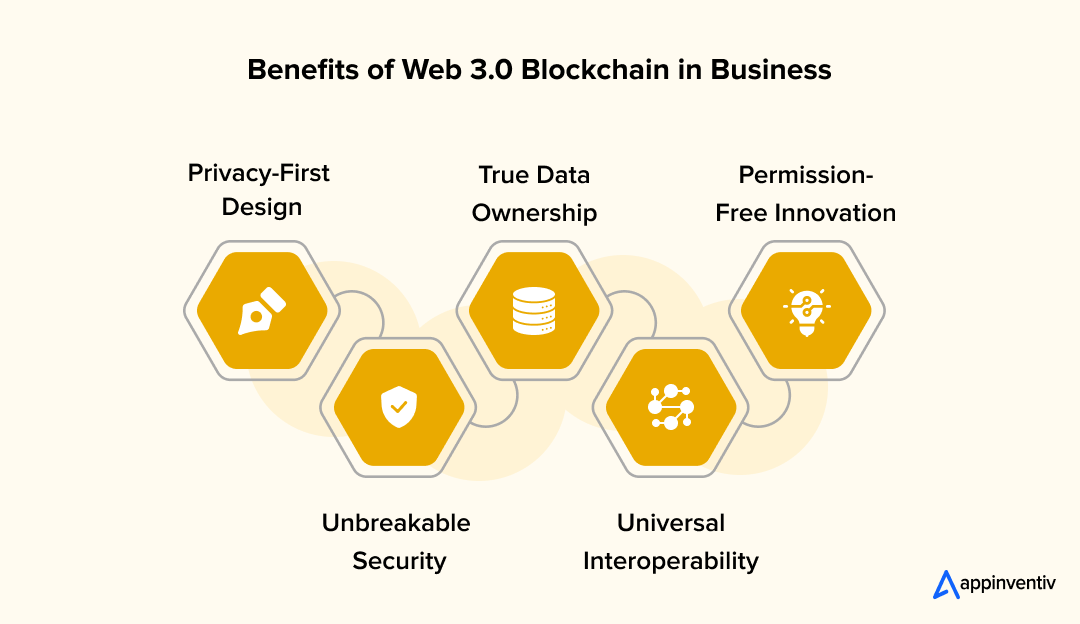
Privacy-First Design
Unlike Web 2.0’s surveillance capitalism, Web 3.0 blockchain puts privacy at its core. Users decide what data to share and can monetize their information directly.
Unbreakable Security
How web 3.0 will affect enterprise security is revolutionary. Decentralized networks are nearly impossible to hack because there’s no single point of failure.
True Data Ownership
For the first time in internet history, users own their data completely. Web 3.0 benefits for companies include direct relationships with customers who control their information.
Universal Interoperability
Web 3.0 blockchain technology works across platforms and devices, eliminating the walled gardens that fragment today’s digital experience.
Permission-Free Innovation
Blockchain-powered business models don’t require approval from central authorities. Anyone can build, innovate, and participate in the digital economy.
Also Read: The Use of Permissioned Blockchains: An Ultimate Guide
How Will Web 3.0 Impact Business: Key Features and Components
To comprehend how Web 3.0 will impact business, we must first dissect its building blocks. Think of them as the vital organs of this new internet, each playing a crucial role in its decentralized, intelligent, and user-centric nature.
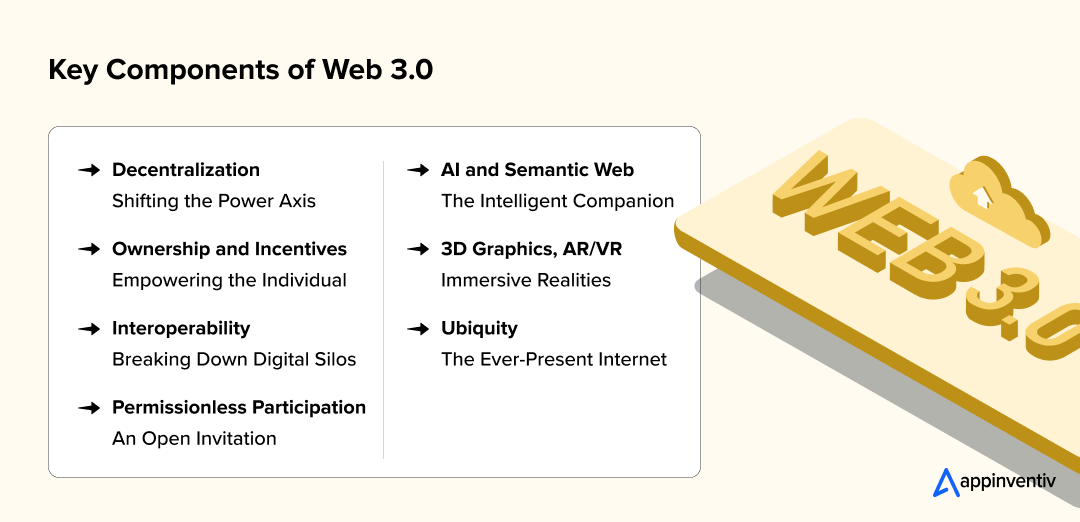
Decentralization: Shifting the Power Axis
This is the very heart of Web 3.0. Unlike Web 2.0, where data and applications reside on centralized servers controlled by a few large corporations, Web 3.0 distributes power across a vast network of interconnected nodes and participants. This means no single entity holds ultimate control or can unilaterally censor content or manipulate data. The internet becomes more resilient, secure, and democratic. For businesses, this translates to reduced reliance on powerful intermediaries, fostering more direct and transparent relationships with customers and partners.
Ownership and Incentives: Empowering the Individual
This is the age of Web 3.0 blockchain, where users are not only the onsumers of content; rather, active participants with genuine ownership. You own your data, your digital assets (like NFTs), and even a stake in the platforms you use. Beyond ownership, Web 3.0 introduces sophisticated incentive mechanisms, often through tokenization, where users are rewarded for their contributions, engagement, or valuable data. This momentous shift crafts new loyalty and engagement models, facilitating vibrant, self-sustaining communities and economies around digital products and services.
Interoperability: Breaking Down Digital Silos
Today’s internet is often fragmented, with data and assets locked within specific platforms. Web 3.0 champions seamless data and asset transfer across multiple, diverse platforms and devices. Imagine effortlessly moving your digital identity, virtual items from a game, or financial assets between different applications without needing cumbersome conversions or relying on central bridges. This fosters a truly integrated digital ecosystem, enhancing user experience and unlocking immense potential for innovation across various industries.
Permissionless Participation: An Open Invitation
The spirit of Web 3.0 is inclusivity. Unlike walled gardens where access might be restricted by geography, social status, or corporate whims, permissionless participation means anyone, anywhere, can join, build upon, and contribute to the network without needing special permission. This openness fuels unprecedented levels of innovation, allowing a global community of developers and entrepreneurs to create new decentralized applications and services that cater to diverse needs, accelerating the growth of the blockchain Web3.0 landscape.
Also Read: How to create a private blockchain: All You Need to Know
AI and Semantic Web: The Intelligent Companion
While Artificial Intelligence has permeated Web 2.0, its role in Web 3.0 is far more profound. Here, AI integrates with the “Semantic Web,” a vision where machines don’t just process keywords but genuinely understand the meaning, context, and intent behind data. This enables enhanced personalization and relevance, providing users with incredibly tailored experiences and more accurate information. For businesses, this means more intelligent automation, predictive analytics, and the ability to serve customers with unparalleled precision and foresight.
3D Graphics, AR/VR: Immersive Realities
Web 3.0 is not just about data; it’s about experience. The advancements in 3D graphics and AR/VR are pivotal in creating deeply immersive online experiences. These technologies blend digital and physical worlds, offering users rich, interactive environments like the metaverse, where social interactions, commerce, and entertainment converge. This creates novel avenues for businesses to engage with consumers, from virtual storefronts to immersive brand experiences.
Ubiquity: The Ever-Present Internet
Web 3.0 aims for omnipresence. Thanks to the rapid expansion of the Internet of Things (IoT) and the growing adoption of Edge Computing (processing data closer to its source), access to the internet will be seamless and pervasive from virtually any device, anywhere. This means continuous, low-latency connectivity, allowing decentralized applications and services to function flawlessly across smart devices, vehicles, homes, and public infrastructure, truly making the Web 3.0 blockchain market accessible at every turn.
These intertwined components and features form the bedrock of Web 3.0 for enterprises, paving the way for a more open, intelligent, and user-centric digital future.
The Web 3.0 Blockchain Stack
The transition from centralized to decentralized requires a fundamental shift in how we build digital infrastructure. Here’s what the Web 3.0 blockchain technology stack looks like:
| Layer | Component |
|---|---|
| Frontend Layer | User Interface and Experience Web3 wallets and authentication Decentralized identity management |
| Application Layer | Smart contracts Decentralized applications (dApps) Protocol layers |
| Blockchain Layer | Consensus mechanisms Distributed ledger technology Cryptographic security |
| Infrastructure Layer | Peer-to-peer networking Decentralized storage Computing resources |
New Business Models Enabled by Web 3.0
Web 3.0 is not just a technological shift—it’s a revolution in how businesses create, deliver, and capture value. It fundamentally reorients the relationship between platforms, creators, and users, opening doors to entirely new ways of operating. Here are some of the most disruptive new business models driven by Web 3.0 blockchain technology:
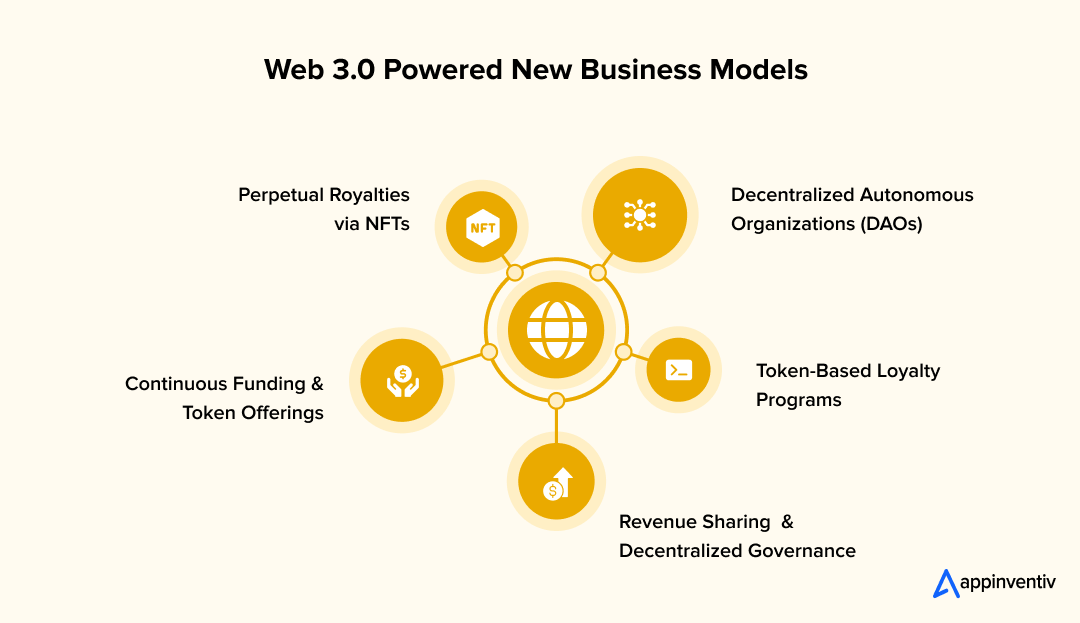
Decentralized Autonomous Organizations (DAOs)
Imagine a company without a traditional CEO or board. DAOs are businesses or communities governed by transparent rules encoded in smart contracts and decisions made through collective voting by their members. This structure enables truly collaborative decision-making, shared ownership, and a democratic approach to management, fostering unparalleled community loyalty and participation.
Token-Based Loyalty Programs
Move beyond traditional point systems. In Web 3.0, customers don’t just earn loyalty points; they own digital tokens. These tokens, powered by blockchain, can be freely traded, used across a network of partner platforms, or even sold for real value. This creates a far stronger sense of partnership between brands and users, turning loyalty into a tangible, valuable asset and enhancing customer engagement and retention dramatically.
Revenue Sharing and Decentralized Governance
In a Web 3.0 paradigm, the profits of a platform or project are not solely held by a few shareholders. Instead, income can be automatically distributed among all active contributors and stakeholders, based on their participation or ownership. This revolutionary approach directly incentivizes innovation, active participation, and equitable value distribution, fostering a more collaborative and fair ecosystem for all involved.
Continuous Funding and Token Offerings
The traditional venture capital model is evolving. Web 3.0 projects can raise capital by selling digital tokens directly to a global audience, either through initial offerings (like ICOs or IDOs) or continuously as the project’s value and adoption grow. This democratizes access to funding for innovators and allows a broader community to invest in and benefit from the success of blockchain Web3.0 ventures.
Perpetual Royalties via NFTs
For creators, artists, and brands, this is a game-changer. Non-Fungible Tokens (NFTs) can be programmed to ensure that the original creator earns a percentage of the sale price every single time their digital asset is resold on the blockchain. This ingenious mechanism creates a perpetual, automated income stream, fundamentally reshaping intellectual property rights and creator compensation in the digital age.
Also Read: What Is NFT And How Does It Work – A Detailed Guide
Transforming Industries: Where Web 3.0 & Blockchain Make Their Mark
The tendrils of Web 3.0 and blockchain are extending across every conceivable industry, instigating profound transformations:
Financial Services (BFSI)
Blockchain offers secure and efficient solutions in the BFSI market for payments, remittances, decentralized finance (DeFi), and asset tokenization, bypassing costly intermediaries and enhancing transaction speeds. The rise of account abstraction is making crypto wallets more user-friendly, mirroring traditional banking experiences, thus lowering entry barriers for businesses and consumers alike.
Benefits:
- Faster, cheaper, and more secure transactions globally.
- Greater transparency in financial operations.
- Reduced reliance on costly intermediaries.
- New opportunities for decentralized finance (DeFi) products and services.
- Enhanced security and fraud prevention for digital assets.
Social Media
Key use cases of blockchain in Web 3.0 include decentralized social networks where users control their content and data. No more algorithm manipulation or unauthorized data harvesting.
Benefits:
- Users truly own their social media profiles and data.
- Content creators receive direct compensation for their work.
- Censorship becomes nearly impossible due to decentralization.
- Community governance replaces corporate control over platform rules.
Data Storage
Decentralized storage solutions (e.g., Filecoin, Arweave) offer robust, censorship-resistant alternatives to centralized cloud providers, providing enhanced security and data integrity for businesses.
Benefits:
- Increased data security and resistance to single points of failure.
- Reduced costs compared to centralized cloud storage.
- Enhanced data privacy through encryption and user control.
- Censorship-resistant storage, ensuring data availability.
Gaming
Blockchain gaming experienced a surge, accounting for 52% of all blockchain activity in March 2022. The rise of Utility NFTs is transforming game economies, allowing players true ownership of in-game assets, fostering new revenue streams, and deeper engagement.
Benefits:
- Players gain true ownership of in-game assets (NFTs).
- New play-to-earn (P2E) models create economic opportunities for players.
- Enhanced transparency and fairness in game economies.
- Increased player loyalty and engagement through digital property rights.
Entertainment and Streaming
The traditional media landscape is riddled with intermediaries and opaque royalty systems. Web 3.0 and blockchain offer a direct conduit between creators and consumers, ensuring fairer compensation and greater control over intellectual property. Decentralized streaming platforms leverage peer-to-peer networks to deliver content, enhancing resilience and reducing distribution costs.
Benefits:
- Fairer and more transparent royalty distribution for artists and creators.
- Reduced piracy and improved copyright protection via immutable ledgers.
- Direct monetization models (e.g., NFTs for exclusive content) bypassing intermediaries.
- Enhanced content security and censorship resistance for distributed media.
- New forms of fan engagement and community building around content ownership.
Supply Chain Management
From farm to fork, blockchain provides an immutable, transparent ledger for tracking goods, combating counterfeiting, ensuring ethical sourcing, and enhancing logistical efficiency. 57% of businesses reportedly have poor supply chain visibility, a blind spot that Web 3.0 effectively addresses.
Benefits:
- End-to-end transparency and traceability of products.
- Reduced fraud and counterfeiting.
- Improved efficiency and automation of logistics.
- Enhanced trust among supply chain participants.
- Easier verification of ethical sourcing and sustainability claims.
Healthcare
Securely managing patient records, enabling verifiable data sharing for research, and ensuring the authenticity of pharmaceuticals are all burgeoning blockchain use cases in business, combating fraud and improving data privacy.
Benefits:
- Secure and immutable storage of patient health records.
- Improved interoperability and secure data sharing between providers.
- Enhanced data privacy and patient control over their medical information.
- Greater transparency and authenticity in pharmaceutical supply chains.
Retail & E-commerce
Beyond accepting crypto payments (as seen with brands like Gucci and Balenciaga), Web 3.0 offers token-based loyalty programs, enhanced supply chain transparency for product authenticity, and truly personalized shopping experiences through self-sovereign identity.
Benefits:
- Web 3.0 revolutionizes payment methods with enhanced security.
- Enhanced loyalty programs through tokenization and NFTs.
- Improved product authenticity verification for consumers.
- More personalized and private shopping experiences.
- Direct engagement with customers through decentralized channels.
Real-Life Examples of Web 2.0 vs Web 3.0 Dapps: How the Digital Landscape is Evolving
As the internet shifts from centralized platforms (Web 2.0) to decentralized ecosystems (Web 3.0), a new era of transparency, user control, and security is emerging. Here’s a quick glimpse at some of the popular Web 2.0 apps and their decentralized Web 3.0 counterparts reshaping the digital experience.
| Category | Web 2.0 Apps | Web 3.0 DApps |
|---|---|---|
| Browser | Chrome | Brave |
| Storage | Dropbox, Google Drive | Storj, IPFS |
| Social Network | Facebook, Twitter | Steemit, Akasha |
| Messaging | Status | |
| Cryptocurrency Exchange | Coinbase, Binance (commonly used ones) | IDEX, Sapien |
| Streaming Services | Netflix, Spotify | Ujo Music, Audius, ySign |
| Insurance and Banking | Google Pay, traditional banking apps | Casha, Safe Share |
Getting Your Business Ready for Web 3.0
As Web 3.0 rapidly changes the digital landscape, businesses need to strategically prepare to embrace this shift. Here’s how your business can get ready to leverage blockchain use cases in business:
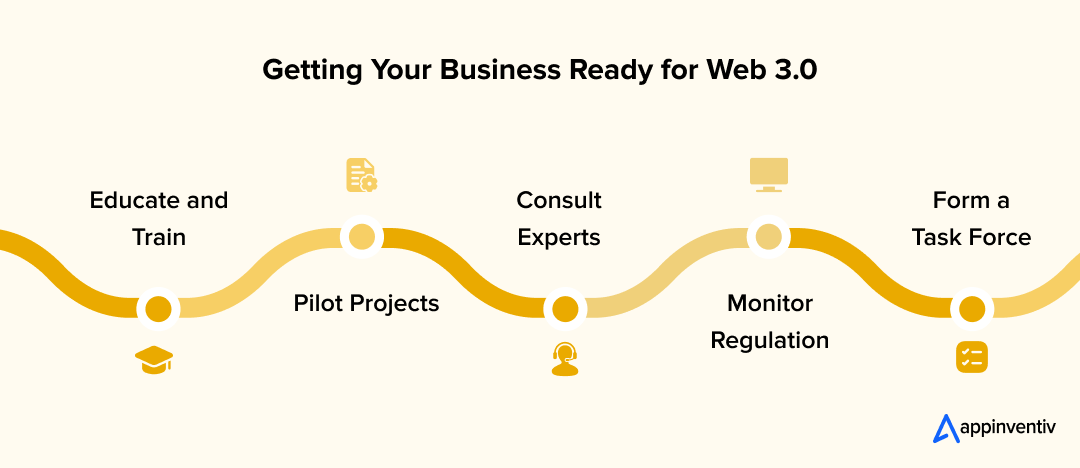
1. Educate and Train
To succeed in the Web 3.0 world, businesses must first build internal awareness and expertise. Organize workshops, webinars, and training sessions to help employees understand blockchain, smart contracts, and decentralized applications (dApps), ensuring your team is well-equipped to leverage these technologies.
2. Pilot Projects
Start with small-scale pilot projects to test the waters. A token-based loyalty program or blockchain-powered supply chain management system can provide valuable insights into how these technologies work in practice, allowing you to refine your approach before a full-scale implementation.
3. Consult Experts
Work with experienced blockchain and Web 3.0 consultants to design secure and scalable solutions. Their expertise will ensure that your business builds on the right technologies, implements industry best practices, and avoids common pitfalls during the integration process.
4. Monitor Regulation
Web 3.0 technologies, including blockchain, are still evolving in terms of regulation. Stay updated on the latest legal and compliance requirements to avoid potential legal issues and take advantage of any new opportunities. Being proactive in this area will keep your business ahead of the curve.
5. Form a Task Force
Assembling a cross-functional team will allow your business to strategically navigate the shift to Web 3.0. This task force should include members from various departments—tech, legal, finance, and marketing—who can collaborate to identify opportunities, assess risks, and develop a roadmap for your Web 3.0 strategy.
Is your business ready for the Web 3.0 revolution? Start preparing today with our expert advice and blockchain services.
Navigating the Uncharted Waters: Challenges and Solutions
Despite its immense promise, the path to widespread Web 3.0 adoption is not without its hurdles. The transition from a centralized internet to one built on decentralized technology in business naturally presents complex “blind spots.” However, with thoughtful strategy and proactive development, these challenges can be transformed into opportunities, ensuring a smoother journey into the future of digital interaction.
Complexity and User Experience
Challenge: The current interfaces of many decentralized applications can be daunting for the average user, necessitating significant improvements in user experience design.
Solution: Focus on intuitive design principles and abstracted blockchain complexities. Developing user-friendly interfaces that mask the underlying technicalities, alongside better onboarding processes, will bridge the gap for mainstream adoption.
Regulatory Uncertainty
Challenge: The rapidly evolving nature of Web 3.0 and blockchain often outpaces legislative frameworks, creating ambiguity and potential legal challenges for businesses.
Solution: Engage in proactive dialogue with regulators and advocate for clear, innovation-friendly frameworks. Businesses must also build modular systems that can adapt to evolving compliance requirements across different jurisdictions.
Scalability and Interoperability
Challenge: As transaction volumes surge, ensuring blockchain networks can handle the load efficiently and communicate seamlessly with each other remains a key technical challenge.
Solution: Invest in Layer 2 scaling solutions (like rollups and sidechains) and cross-chain communication protocols. These innovations are continuously improving transaction speeds and enabling different blockchain networks to work together, enhancing overall network capacity.
Energy Consumption
Challenge: Concerns about the environmental impact of certain blockchain consensus mechanisms (though many newer protocols are significantly more energy-efficient) need to be addressed.
Solution: Promote the adoption of energy-efficient consensus mechanisms like Proof-of-Stake (PoS) over Proof-of-Work (PoW). Additionally, investing in renewable energy sources for blockchain operations and optimizing network designs can significantly reduce the carbon footprint.
Enter the World of Web 3.0 Blockchain for Businesses with Appinventiv
The arrival of Web 3.0 blockchain for businesses isn’t just another tech update; it’s a complete game-changer for the digital world. Imagine a web where you truly own your data and where new, decentralized business models thrive. This is the profound Web 3.0 blockchain impact on businesses – a monumental shift that’s transforming every industry. To truly succeed in this new era, businesses need to grasp the inner workings of Web 3.0 and tackle its challenges head-on.
At Appinventiv, we get it. As a leading blockchain app development company, we know navigating these uncharted waters demands not just vision but also a deep understanding of the technical landscape and how it drives business digital transformation.
Our 10+ years of industry experience working with diverse enterprises has given us the unique ability to turn the exciting, often abstract, promises of decentralized technology in business into real, impactful solutions.
We’re here to guide your enterprise through every twist and turn of web 3.0 blockchain integration in businesses, turning potential hurdles into powerful opportunities. Don’t just watch the digital renaissance unfold; let’s make your business a leading force in it.
Partner with us to supercharge your Web 3.0 blockchain journey.
FAQs
Q. What is Web 3.0 blockchain for businesses?
A. Web 3.0 blockchain for businesses creates a fair, transparent network where people interact without sacrificing security or privacy. It’s powered by artificial intelligence, big data, and blockchain technology, making the web semantic and intelligent.
Unlike its predecessors, Web 3.0 blockchain technology puts control back in users’ hands. Data isn’t hoarded by tech monopolies—it’s distributed across decentralized networks, encrypted, and owned by individuals.
Q. What role does blockchain technology play in Web 3.0?
A. Blockchain technology is the foundational layer of Web 3.0. It ensures decentralization, security, and transparency through immutable ledgers, enables digital ownership via tokens and NFTs, and powers automated agreements through smart contracts.
Q. How can Web 3.0 and blockchain improve enterprise efficiency?
A. Web 3.0 and blockchain improve enterprise efficiency by automating processes through smart contracts, reducing the need for intermediaries, enhancing data accuracy and verifiable record-keeping, and providing unprecedented transparency in areas like supply chain management.
Q. How are companies using blockchain in Web 3.0?
A. Companies are leveraging blockchain in Web 3.0 for decentralized finance (DeFi) solutions, creating NFT-based loyalty programs, ensuring transparent supply chains, building play-to-earn gaming economies, and enabling secure, user-owned data management.
Q. How will Web 3.0 affect enterprise security?
A. Web 3.0 will profoundly enhance enterprise security by distributing data across networks, eliminating single points of failure, providing cryptographic security for transactions, and empowering users with greater control over their own data privacy and access permissions.


- In just 2 mins you will get a response
- Your idea is 100% protected by our Non Disclosure Agreement.

Key takeaways: Dubai's VARA framework mandates strict compliance protocols for blockchain enterprises. To comply with VARA in Dubai, enterprise blockchain systems should use private networks that only approved members can join. Choosing between Hyperledger Fabric, private Ethereum, Corda platforms, etc., significantly impacts long-term scalability, compliance automation, and maintenance costs. Enterprises implementing VARA enterprise blockchain development…

How Much Does It Cost to Build a Crypto Trading App Like Swyftx?
Key takeaways: Swyftx’s Rise: Australia’s top-rated crypto exchange app attracts 1.1M+ users with its easy UX, pro tools, and learning features. Development Costs: A Swyftx-like app development can cost AUD 30K–500K, based on scope and functionality. Crypto Market Momentum: With Layer-2 tech and ETF approvals, the market is booming, and transaction costs are dropping. Winning…

The Role of Blockchain in Solving the Challenges of Cross-Border Payments
Anyone who has tried sending money across borders knows the pain - it’s slow, expensive, and there’s always another bank or payment service taking a cut. Even with these blockers, you end up waiting, refreshing the status, wondering where the money’s stuck. That’s why blockchain in cross border payments has been getting so much attention…








